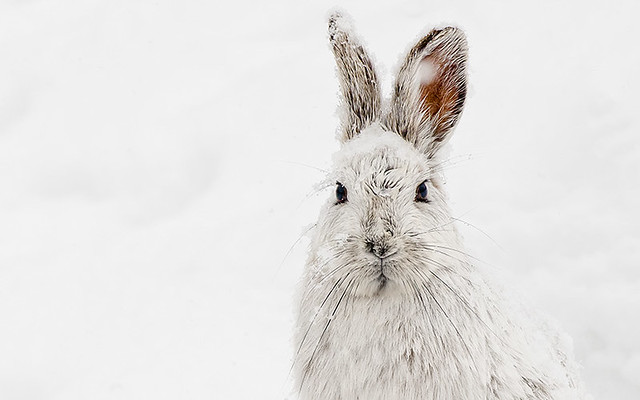The snowshoe hare (Lepus americanus), also called the varying hare, or snowshoe rabbit, is a species of hare found in North America. It has the name “snowshoe” because of the large size of its hind feet. The animal’s feet prevent it from sinking into the snow when it hops and walks. Its feet also have fur on the soles to protect it from freezing temperatures.
For camouflage, its fur turns white during the winter and rusty brown during the summer. Its flanks are white year-round. The snowshoe hare is also distinguishable by the black tufts of fur on the edge of its ears. Its ears are shorter than those of most other hares.
In summer, it feeds on plants such as, grass, ferns and leaves; in winter, it eats twigs, the bark from trees, and buds from flowers and plants and, similar to the Arctic hare, has been known to steal meat from baited traps.[3] Hares are carnivorous under the availability of dead animals, and have been known to eat dead rodents such as mice due to low availability of protein in a herbivorous diet. It can sometimes be seen feeding in small groups. This animal is mainly active at night and does not hibernate.
The snowshoe hare may have up to four litters in a year which average three to eight young. Males compete for females, and females may breed with several males.
A major predator of the snowshoe hare is the lynx. Historical records of animals caught by fur hunters over hundreds of years show the lynx and hare numbers rising and falling in a cycle, which has made the hare known to biology students worldwide as a case study of the relationship between numbers of predators and their prey.[4][5]
(From: Wikipedia, April 2017)




